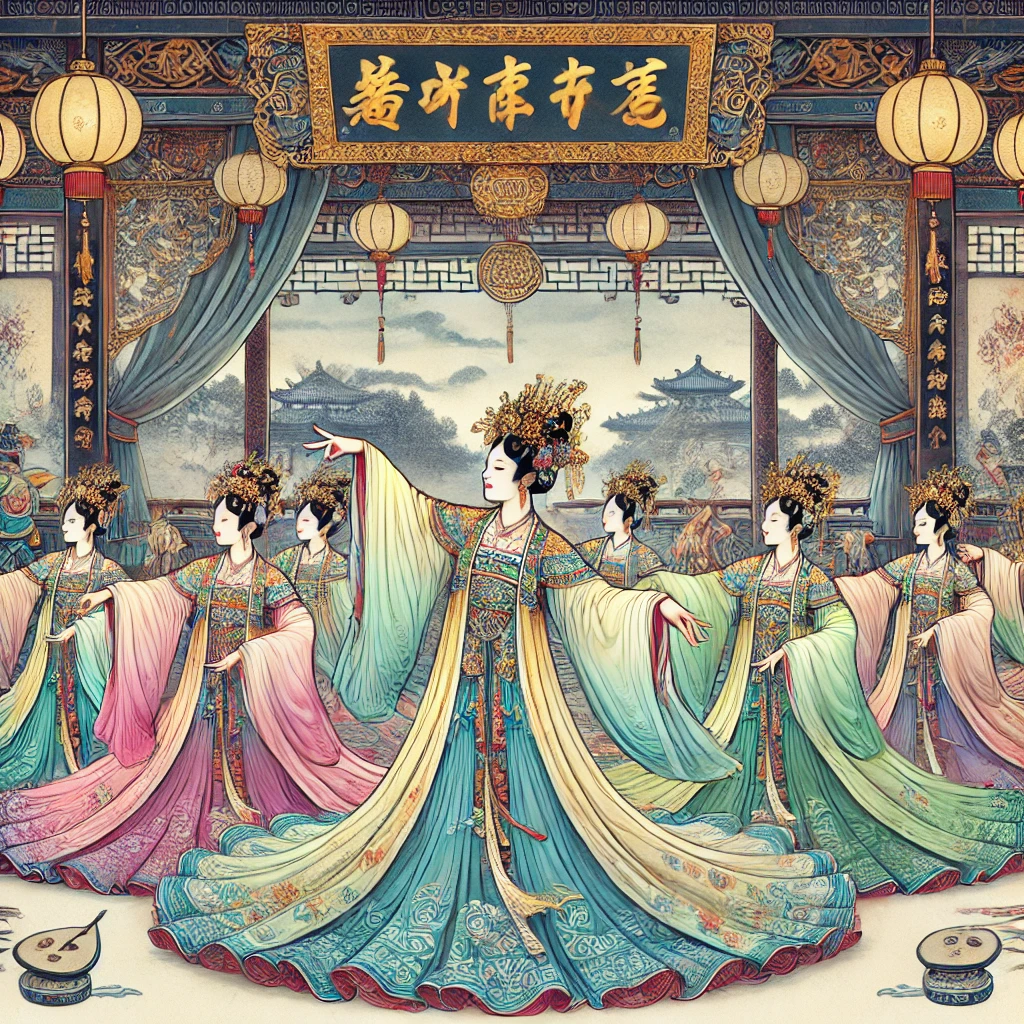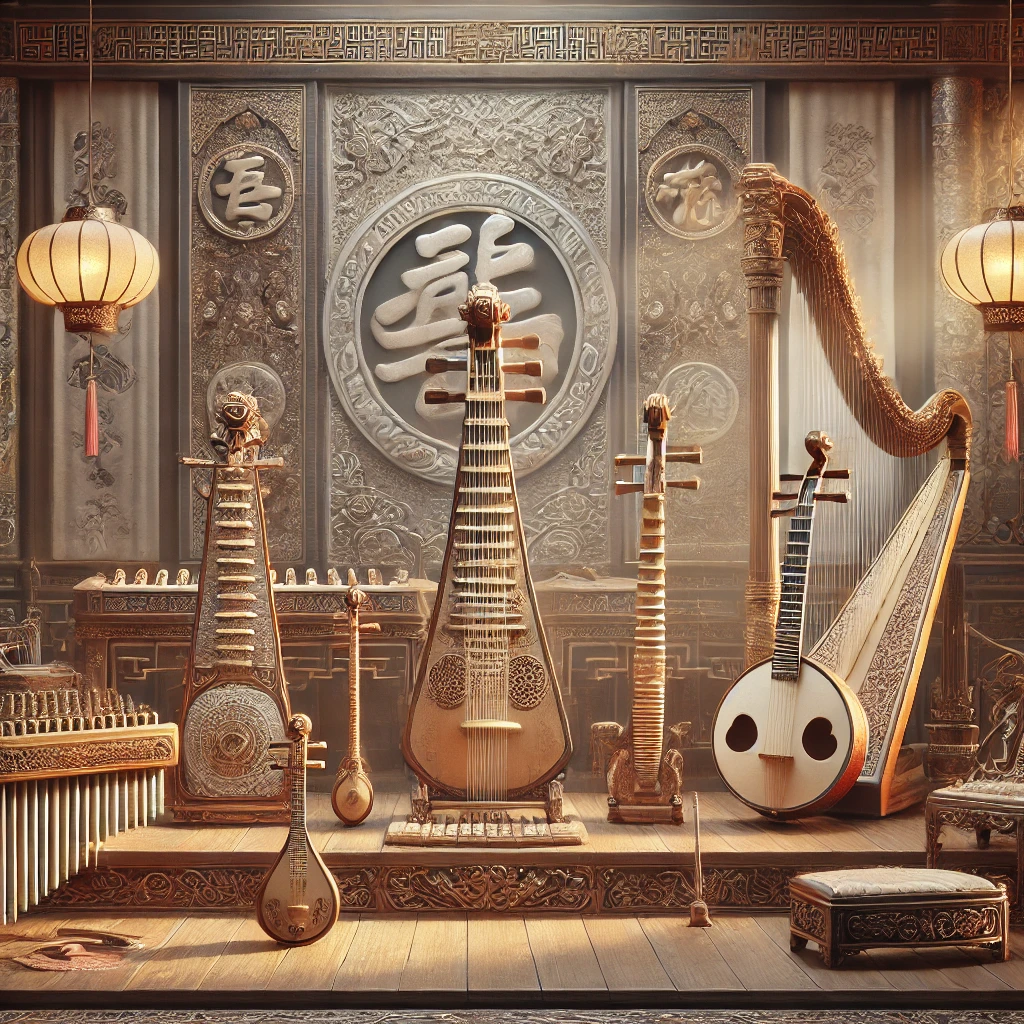
Dance Of The Han Dynasty
The Dance of the Han Dynasty – Grace, History, and Legacy
The Han Dynasty (206 BCE–220 CE), a golden era of Chinese culture, brought forth not only political and technological advancements but also an explosion of artistic expression. Dance, an essential element of court life, religious rituals, and folk festivities, became one of the most evocative forms of cultural storytelling during this period. The dances of the Han Dynasty reflected harmony, spirituality, and artistry, all while showcasing the intricate relationship between motion and meaning. Today, the echoes of Han-era dance remain alive in Chinese heritage, serving as a symbol of timeless grace.
1. The Historical Roots of Han Dynasty Dance
The Han Dynasty was marked by its deep cultural sophistication, open trade along the Silk Road, and the rise of Confucianism, Daoism, and even Buddhism. These forces influenced not just philosophy and governance but the art of dance as well.
Origins and Influences
Han dances had origins in earlier Chinese dynasties, such as the Zhou (1046–256 BCE), but the art form matured significantly during this era. Dances were influenced by ritual practices, agricultural celebrations, and shamanistic performances meant to communicate with deities or spirits.
One of the hallmarks of the Han period was the empire’s openness to foreign ideas through trade routes. Exotic music, dance techniques, and costumes traveled into China from Central Asia, India, and Persia, creating an amalgamation of movement and musical styles.
The dances of the Han Dynasty came to be categorized into two main types:
- Court Dances (雅乐 yayue): Formal dances performed at imperial ceremonies and banquets.
- Folk Dances (俗乐 suyue): Popular, energetic performances for the common people, often tied to agriculture and festivities.
2. The Performance
Elements of Han Dynasty Dance
Music and Instruments
Music was the soul of dance. Instruments used during this period included:
- The guqin (seven-string zither) and pipa (lute), which created melodic accompaniments.
- Flutes and reed instruments, such as the xiao and sheng, producing ethereal sounds.
- Percussion, including drums and cymbals, to maintain rhythm and dramatize movements.
These sounds merged to provide either stately majesty for court dances or upbeat tempo for folk performances.
Costumes and Props
Dance costumes during the Han Dynasty were characterized by flowing silk robes, often dyed in vibrant colors. Costumes emphasized graceful movement, with long sleeves, known as water sleeves, enhancing the visual impact of arm gestures. The dancers’ accessories, such as ribbons, fans, and lanterns, added dynamism to the performances.
Gold and jade jewelry, symbols of wealth and spirituality, were often integrated into the costumes for court dances.
Choreography
The dance movements were meticulously designed to reflect the themes of harmony, beauty, and balance. Some iconic elements of choreography included:
- Rotational Movements: Inspired by celestial cycles and Daoist ideas of natural balance.
- Elegant Hand Gestures: Symbolizing emotions, storytelling, or reverence.
- Dynamic Patterns: Ensemble dances often involved dancers weaving in and out of formations, creating elaborate patterns that resembled calligraphy or nature, like rippling waves.
3. Symbolism and Meaning
The dances of the Han Dynasty were more than mere entertainment; they carried profound meanings tied to spirituality, politics, and cultural identity.
Ritual Significance
Many dances were tied to religious ceremonies and rites. For instance:
- Shamanistic Dances: Performed by religious leaders to invoke rain, appease deities, or ward off evil spirits.
- Buddhist Influence: With Buddhism spreading during the later Han Dynasty, dances became part of religious worship, combining physical movement with chants.
Celebratory and Political Symbolism
At the imperial court, dances demonstrated the power and refinement of the emperor. Grand performances during banquets symbolized the wealth and unity of the empire. The dances often depicted mythological stories or historical victories.
Popular folk dances, by contrast, celebrated the rhythm of daily life—harvests, marriages, and festivals. They unified local communities and brought joy to common people.
4. The Legacy of Han Dynasty Dance
The Han Dynasty laid the foundation for many dance traditions that continued to evolve through later dynasties, such as the Tang (618–907 CE), renowned for its extravagant court dances.
Silk Road Influence
The trade routes of the Silk Road played a vital role in connecting Chinese dance with other cultural practices. Han Dynasty dances inspired—and were inspired by—Persian and Indian traditions, creating a multicultural tapestry that defined Chinese artistry.
Modern Revivals
Today, elements of Han Dynasty dance can be seen in traditional Chinese performance arts:
- Peking Opera: Though it emerged later, Peking Opera incorporates elements of ancient Han dance, such as water sleeves and expressive hand movements.
- Classical Chinese Dance: This genre has preserved the elegance and storytelling techniques of Han-era choreography.
- Modern Performances: Dance troupes around the world reenact Han Dynasty-inspired dances using recreated costumes and instruments.
Cultural Identity
Han dances remain a key symbol of Chinese cultural identity. As Chinese people often identify ethnically as the “Han,” these ancient performances serve as a cultural anchor that bridges the past and present.
5. A Glimpse into the Future
Preserving the Art
With growing interest in cultural heritage and traditions, initiatives to revive Han Dynasty dance are flourishing. Universities, cultural troupes, and artists work collaboratively to:
- Reconstruct Ancient Choreography: Based on historical texts, murals, and artifacts, efforts are made to piece together lost movements.
- Introduce New Generations: Schools incorporate Han-inspired dance into curricula to foster pride in cultural roots.
- International Exposure: Through cultural festivals and global tours, Han dances are introduced to audiences worldwide.
Modern technology, like virtual reality and augmented reality, is also playing a role in recreating immersive Han dance experiences.
Conclusion
The dances of the Han Dynasty were more than just beautiful movements—they were expressions of spirituality, celebration, and identity. Their legacy is reflected in Chinese cultural arts today, reminding us of a time when dance was not just entertainment but an act of harmony with nature, spirit, and society.
Whether performed in the grandeur of the imperial court or amidst fields of golden harvests, these dances captured the essence of an era, blending storytelling, art, and meaning into an unforgettable form of expression. As the years march on, the legacy of Han Dynasty dance continues to inspire awe, ensuring that its graceful movements will never fade from the stage of history.

Online resources for music and dance of the Han Dynasty
Exploring the music and dance of the Han Dynasty (206 BCE–220 CE) offers a fascinating glimpse into ancient Chinese culture. Here are some online resources to deepen your understanding:
- Keats School Article on Han Dynasty Dance: This article provides insights into the characteristics and significance of Han Dynasty dance, highlighting its integration of acrobatics, martial arts, and singing.
Keats Chinese - Shen Yun Performing Arts – Han Dynasty Overview: Shen Yun offers an exploration of the Han Dynasty’s cultural legacy, including its contributions to dance and music.
Shen Yun Performing Arts - Academia.edu Paper on Han Dynasty Dance: This scholarly paper examines the representations and functions of dance in Han Dynasty Chinese society, providing an academic perspective on the art form.
Academia - Smithsonian’s National Museum of Asian Art – Traditional Chinese Music: This resource features performances by the Han-Tang Ensemble, showcasing traditional Chinese instruments and compositions that reflect the musical heritage of the Han and Tang dynasties.
Asia Archive - Goldsmiths, University of London – Short Course on Han-Tang Classical Dance: This course offers an introduction to Chinese classical dance, focusing on the Han and Tang dynasties, and embodies traditional Chinese aesthetics and artistic spirit.
Goldsmiths - China Daily – Han Dynasty Dance Performance by Beijing Dance Academy: This video showcases a dance piece in the style of the Han Dynasty, featuring a fusion of poetry, music, and dance.
China Daily - Metropolitan Museum of Art – Han Dynasty Dancer and Musicians: Explore this collection item featuring earthenware figurines of a dancer and musicians from the Han Dynasty, providing a visual representation of the period’s artistic expression.
Metropolitan Museum of Art - Wikipedia – History of Chinese Dance: This comprehensive article covers the evolution of Chinese dance, including detailed sections on the Qin and Han dynasties, and discusses various dance forms and their cultural significance.
Wikipedia - Wikipedia – Dragon Dance: Learn about the origins and development of the Dragon Dance, a traditional performance with roots in the Han Dynasty, and its significance in Chinese culture.
Wikipedia
For a visual experience, you might enjoy the following performance that recreates Han Dynasty dance:
These resources offer a comprehensive overview of the music and dance traditions of the Han Dynasty, providing both scholarly insights and visual representations to enhance your understanding.
Multilingual Folk Song Explorer GPT
Engaging and comprehensive folk song guide with interactive and multimedia features.
Multilingual Folk Song Explorer
Make your own folk website online!
Turn your passion into profit today and start your own online journey. Learn how to create and grow your website withna fabulous community and join for free!

